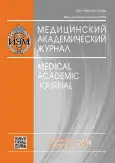CELLULAR MECHANISMS OF NEUROPSYCHIATRIC SYMPTOMS INDUCED BY HYPOTHYROIDISM IN MOUSE MODEL
- Authors: Mami N.1
-
Affiliations:
- Laboratory of Pathophysiology, Graduate School of Pharmaceutical Sciences, Kyushu University
- Issue: Vol 19, No 1S (2019)
- Pages: 27-28
- Section: Articles
- Published: 15.12.2019
- URL: https://journals.eco-vector.com/MAJ/article/view/19307
- ID: 19307
Cite item
Abstract
Thyroid hormones (THs) are essential not only for the development of the central nervous system (CNS) but also for matured brain function. In the CNS, circulating thyroxine (T4) crosses blood-brain barrier via specific transporters and is taken up to astrocytes, becomes L-tri-iodothyronine (3, 3’, 5-triiodothyronine; T3), an active form of TH, by type 2 de-iodinase (D2). T3 is released to the brain parenchyma from astrocytes (glioendocrine system). In adult CNS, both hypo- and hyper-thyroidism, the prevalence in female being > 10 times higher than that in male, may affect psychological condition and potentially increase the risk of cognitive impairment and neurodegeneration including Alzheimer’s disease (AD). We have reported, that non-genomic effects of T3 on microglial functions and its signaling [1] and sex- and age-dependent effects of THs on glial morphology in the mouse brains of hyperthyroidism [2, 3]. Behavioral changes and spine density in hippocampus also showed sex-dependence. Recently we analyzed the opposite thyroid dysfunction, hypothyroidism, and found sex- and age-dependent changes in glial morphology and animal behavior as well. These results may help to understand physiological and/or pathophysiological functions of THs in the CNS and how hyper- and hypothyroidism affect psychological condition and cognition.
Keywords
Full Text
About the authors
Noda Mami
Laboratory of Pathophysiology, Graduate School of Pharmaceutical Sciences, Kyushu University
References
- Mori Y, et al. Effects of 3,3’,5-triiodothyronine on microglial functions. Glia. 2015;63(5):906-920.
- Noda M. Possible role of glial cells in the relationship between thyroid dysfunction and mental disorders. Front. Cell. Neurosci. 2015;9:194.
- Noda M, et al. Sex- and age-dependent effects of thyroid hormone on glial morphology and function. OM&P. 2016;2:85-92.
Supplementary files







